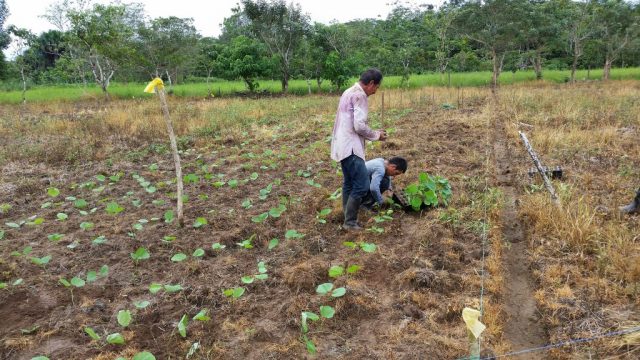Caquetá is one of the regions with the highest rate of deforestation in the Colombia. Approximately 29000 ha were deforested in 2013 in the region, representing 24.7% of the total area deforested in the country, as informed by the national monitoring system of forests and carbon. This department is located in the Colombian Amazon and covers the transition between the Andes and the Amazon, making this region rich in biodiversity and ecosystem services.
Livestock production is one of the main economic activities in Caquetá, representing 11% of the local GDP, according to the Colombian statistics office (DANE). Meat and milk production in Caquetá are usually carried out in large extensions where by the beginning of the 20th century it was possible to find native rainforest instead. Nowadays, native forests are only present in relicts or in remote areas in the mountains and lowlands of the Amazon, morichales (a type of riparian forest) are the few standing natural habitats that survived deforestation, and soils are becoming more and more degraded with time.
Given the recent changes in the political scene in Colombia, it is expected that the region will receive new-comers if the peace agreement is signed, this will be translated into more pressures to the current productive systems and the remaining natural ecosystems. In addition, the demand for beef and milk is steadily growing as the income of Colombians continues to improve, and it is unlikely that a switch to a more plant-based diet will happen within the coming decade.
In order to address these challenges, alternatives to improve meat and milk production in Caquetá in a more sustainable way are needed. Silvopastoral systems (SPS) are spatial arrangements of trees, forages and animals that can help maintaining and improving ecosystem services, restoring degraded lands, reducing the pressure against native forests, while at the same time enhancing the production of meat and milk. Facilitating access to a wide diversity of forages that are adapted to the local conditions, e.g., acid soils, long rainy seasons, and information on their use, provide support to establish and propagate such plant material are key actions for farmers willing to implement SPS in their farms. Therefore, our project “Sustainable Amazonian Landscapes” that includes in its team researchers from the Tropical Forages program of CIAT, CIPAV (well known for its experience on silvopastoral systems) and the Universidad de la Amazonía (which is researching on forages alternatives for the region), is establishing a garden of shrubs and forages (or vitrina forrajera as we call it in Spanish) with more than twenty different accessions of forages, including accessions of Brachiaria humidicola, a grass with the potential of reducing greenhouse gas emissions derived from nitrification; Arachis pintoi, a wild relative of peanut, valued for its nutritional content, and ability to control weeds; and native shrubs. This garden is located at Macagual, the experimental station of the Universidad de la Amazonía, and will be used for academic training, field days for farmers, and as a source of planting material for the region.

Establishment of the garden of shrubs and forages.
This work is part of the project “Sustainable Amazonian Landscapes” which is supported by the International Climate Initiative (IKI). The project is led by CIAT and implemented together with the Potsdam Institute for Climate Impact Research (PIK), the Center for Research on Sustainable Systems of Agriculture Production (CIPAV), Instituto Amazónico de Investigaciones Científicas SINCHI, Universidad de la Amazonía, Instituto de Investigaciones de la Amazonía Peruana (IIAP), and Universidad Nacional Agraria La Molina (UNALM).
Contacts: Marcela Quintero (m.quintero@cgiar.org), Nora Castañeda (n.p.castaneda@cgiar.org)
Forages program: Jacobo Arango (j.arango@cgiar.org), Mauricio Sotelo (m.sotelo@cgiar.org),
Partners: Antonio Solarte (antonio@fun.cipav.org.co), Juan Carlos Suárez (juansuarez1@gmail.com), Faver Álvarez (falvarezc@uniamazonia.edu.co)






